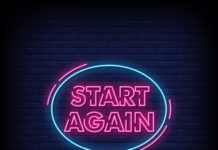Yesterday, I outlined a strategy to approximately replicate the performance of a Clean Energy mutual fund at much lower cost, with only a couple hours of effort. I gave a cost example based on $5000 invested in 5 stocks, with another $1000 worth of a single stock added in each subsequent year.
This is the procedure I would use to select the initial five stocks.
- Collect all the top five or ten holdings of the available Clean Energy mutual funds. This data is available from Morningstar, and on fund sponsor’s home pages.
- A few of these holdings may be international, and not available through your stock broker to small purchasers. Eliminate them from consideration.
- Organize the remaining companies by cleantech sector (we have stocks listed by sector on out Cleantech Stocks page, or you can select sectors yourself by reading the company profile on Morningstar, or the company’s home page.
- In the top five sectors, rank the companies by recent performance (1-3 year.) Recent underperformers tend to do better in subsequent years, so choose the worst performers.
In subsequent years, look at your portfolio, and pick a single stock which you do not yet own from a sector which is relatively underrepresented in your current portfolio. Such under-representation could occur because your other sectors have been outperforming that sector, or because you have been picking more stocks from other sectors in recent years.
Stocks Green Mutual Funds Own
Here are all the stocks listed in the top 5 holdings of the clean energy mutual funds compared in my recent article: American Trust Energy Alternatives Fund (ATEAX), the Calvert Global Alternative Energy Fund (CGAEX), Firsthand Alternative Energy (ALTEX), Guinness Atkinson Alternative Energy Fund (GAAEX), New Alternatives Fund (NALFX), and Winslow Green Growth Fund (WGGFX), along with CleanTech sector and 3 year performance (obtained from Morningstar.com.) I have eliminated several which investors would need to purchase on foreign markets. Many brokers have minimum transaction sizes and higher fees for such transactions..
If you were putting together a larger portfolio this way, you might also look at the top holdings of the Clean Energy ETFs, and/or expand the search to the top 10 holdings of each fund.
| Stock | In Fund(s) | Sector | 3 yr Annual |
| ADM | American Trust | Ethanol | -5% |
| CTXS | American Trust | Efficiency | -14% |
| WFFIF | Winslow | Efficiency | -10% |
| LXU | Winslow | Efficiency | 10% |
| ELON | Firsthand | Grid | -10% |
| STP | Firsthand | Solar | -45% |
| FSLR | Winslow, AmericanTrust | Solar | 216%* |
| CIG | Guinness Atkinson | Utility | -2% |
| FPL | Calvert | Utility | 6% |
| SJI | New Alternatives | Utility | 11% |
| VWSYF.PK | New Alternatives | Wind | -17%* |
| GCTAF.PK | Calvert | Wind | -6% |
| AMSC | Winslow | Wind | 10% |
| * Average annual return based on less than 3 years’ data. | |||
Since we are looking for 5 stocks, and 6 different sectors appear in the chart, we have a choice of one sector not to include. I personally don’t feel that most of the utilities listed belong in a clean energy fund, because most of them produce more than half of their power from fossil fuels, with the exception of Cemig (CIG), which is mostly hydropower. If Cemig were not in the list, I’d drop the utility sector. However, since it is in the list I choose to drop the Ethanol sector instead, given the questionable environmental benefits of ethanol.
Note that I am not making this decision based on the sector which I think will perform the best, because I am attempting to do this exercise using only information which a small investor who is interested in clean energy might have at his fingertips, and predicting stock moves is not something that should be tried by someone only willing to devote a few hours a year to their investments.
Taking the stock which has the worst previous 3 year performance from each of the remaining categories, I arrive at this portfolio, based on closing prices on February 27, 2009:
| Company | Shares* | Price |
| Citrix Systems (CTXS) | 48 | $20.58 |
| Echelon Corporation (ELON) | 165 | $5.99 |
| SunTech Power (STP) | 162 | $6.09 |
| Cemig (CIG) | 72 | $13.66 |
| Vestas Wind Systems (VWSYF.PK) | 22 | $44.85 |
| Total portfolio cost: $5,000 including $65 brokerage commissions | ||
My hope is that this portfolio should roughly track a basket of the six mutual funds it is based on, but outperform due to its lower costs and the strategy of picking previous underperformers. For comparison, here’s the mutual fund portfolio:
| Fund | Shares | Price |
| ATEAX (American Trust) | 82.43 | $10.11 |
| CGAEX (Calvert) | 122.19 | $6.82 |
| ALTEX (First Hand) | 171.47 | $4.86 |
| GAAEX (Guinness Atkinson) | 205.76 | $4.05 |
| NALFX (New Alternatives) | 29.75 | $26.68 |
| WGGFX (Winslow Green Growth) | 111.71 | $7.46 |
| Total portfolio cost: $5000, including $39.58 front-end load on NALFX | ||
A year from now, I plan to take a look at how the two portfolios performed, and choose another stock to add.
Tom Konrad, Ph.D.
DISCLOSURE: Tom Konrad has long positions in ADM, WFFIF, LXU, ELON, GCTAF, and AMSC. GAAEX is an advertiser on AltEnergyStocks.com.
DISCLAIMER: The information and trades provided here are for informational purposes only and are not a solicitation to buy or sell any of these securities. Investing involves substantial risk and you should evaluate your own risk levels before you make any investment. Past results are not an indication of future performance. Please take the time to read the full disclaimer here.








A year from now is good but sooner even better. Maybe you could compare this portfolio to your 2009 picks when you update their performance for readers.
I think a year is a very short time to judge this sort of strategy… Sooner would be even less meaningful. But I’ll think about making a short comment as part of another performance update article. However, it’s likely not to be very meaningful (which is something I’d say at the time.)
I’m tracking these in Yahoo Finance.
It’s been a week since I made the portfolios (I wrote this last weekend, and the current results are that the “Quick 5” portfoilio is down 8.09%. The 6 mutual funds in question are down between 6.42% (GAAEX) and 12% (NALFX, much due to the load) or 10% (WGGFX.)
Overall, the mutual fund portfolio is down 7.36% (including load) and The difference is in the two results is $36, compared to the extra $25 cost of starting up the “Quick” portfolio. So far they are tracking very closely. It’s way too early to see any effect of the difference in expense ratios.
A Quick Clean Energy Portfolio
Tom Konrad ( AltEnergyStocks ) submits: In a previous article I outlined a strategy to approximately
A comparison with the previous year would have been better.we would be able to deduce the positive or negative changes.Cant the previous year report be posted also?
I did not attempt this in 2008, and the data necessary to reconstruct the same methodology is no longer available.